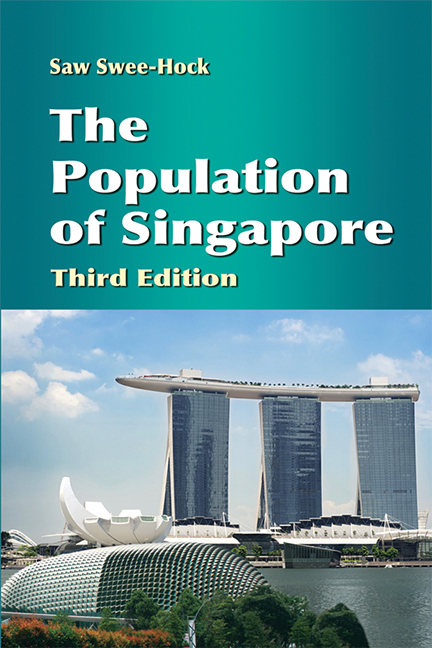Book contents
- Frontmatter
- Contents
- List of Tables
- List of Figures
- Preface
- Preface to Second Edition
- Preface to Third Edition
- 1 Background
- 2 Population Growth and Distribution
- 3 Changing Population Structure
- 4 Migration
- 5 Mortality Trends and Differentials
- 6 Marriage Trends and Patterns
- 7 Divorce Trends and Patterns
- 8 Fertility Trends and Differentials
- 9 Family Planning, Abortion and Sterilisation
- 10 Fertility Policies and Programmes
- 11 Immigration Policies and Programmes
- 12 Labour Force
- 13 Future Population Trends
- Appendix
- Bibliography
- Index
13 - Future Population Trends
Published online by Cambridge University Press: 21 October 2015
- Frontmatter
- Contents
- List of Tables
- List of Figures
- Preface
- Preface to Second Edition
- Preface to Third Edition
- 1 Background
- 2 Population Growth and Distribution
- 3 Changing Population Structure
- 4 Migration
- 5 Mortality Trends and Differentials
- 6 Marriage Trends and Patterns
- 7 Divorce Trends and Patterns
- 8 Fertility Trends and Differentials
- 9 Family Planning, Abortion and Sterilisation
- 10 Fertility Policies and Programmes
- 11 Immigration Policies and Programmes
- 12 Labour Force
- 13 Future Population Trends
- Appendix
- Bibliography
- Index
Summary
An examination of the most plausible course of population trends in the future and the social and economic consequences of such trends will be presented in this chapter. To do this, we need to prepare population projections on the basis of certain assumptions concerning the future course of migration, mortality and fertility, the three factors determining the rate of increase or decline in any population. In Singapore the future path of mortality movement is not difficult to decide, while the movement of fertility in the future is somewhat more problematic to resolve. It is of course quite impossible to reckon the flow of migration in the future, which depends primarily on the need for foreigners in the various sectors of the economy that is greatly dependent on external factors outside the control of Singapore.
Three sets of population projections based on three different assumptions in regard to the future course of fertility have been computed to provide us with a better insight into the possibilities of the growth and structure of the population in the years ahead. Some useful hints regarding how to managing the population In the coming years can be gleaned from the results of these projections. In addition, we have constructed another population projection on the assumption that the total fertility rate will move up to the replacement level of 2.11 and remain at this level indefinitely. The results of this projection based on a somewhat unrealistic fertility assumption are only meant to illustrate the previously-mentioned concepts such as zero population growth, population replacement, and stationary population.
METHODOLOGY
The population projections were prepared by the component method which involves the separate projection of the number of males and females in each age group of the population. The figures for the 2010 base resident population the 2010 Census of Population conducted by the Department of Statistics. Since the base resident population in 2010 has been divided into quinary age groups, the projections are computed for five-year intervals of time so that at the end of the five-year period all the survivors of one age group would have moved into the next older age group.
- Type
- Chapter
- Information
- The Population of Singapore , pp. 298 - 336Publisher: ISEAS–Yusof Ishak InstitutePrint publication year: 2012



